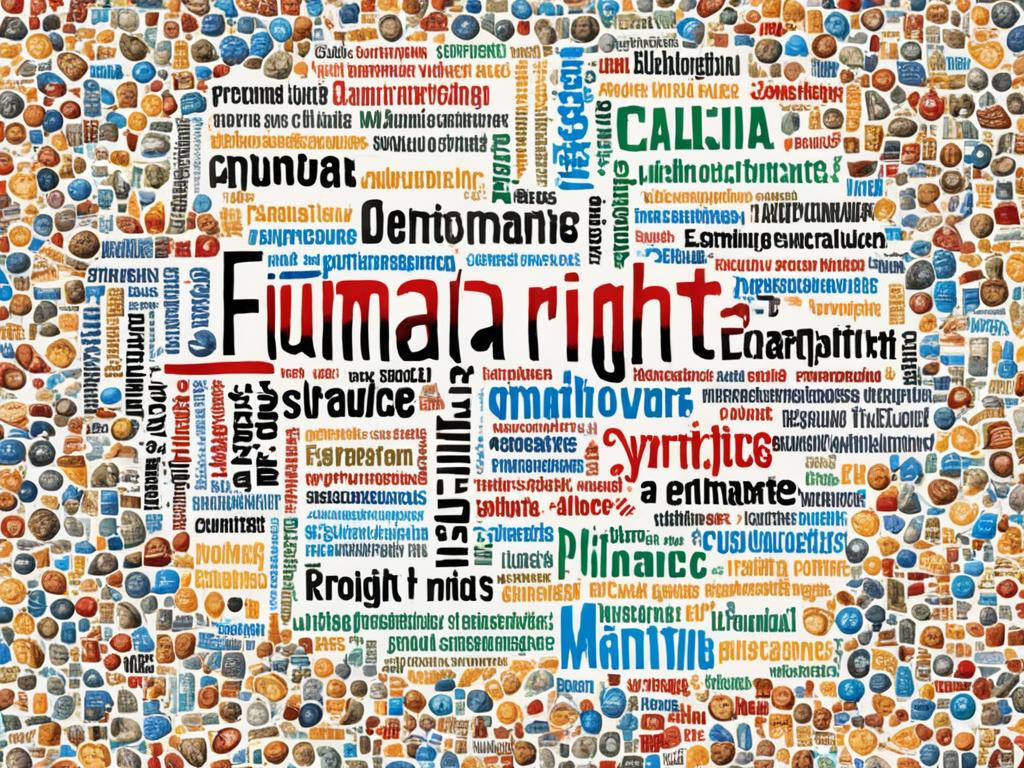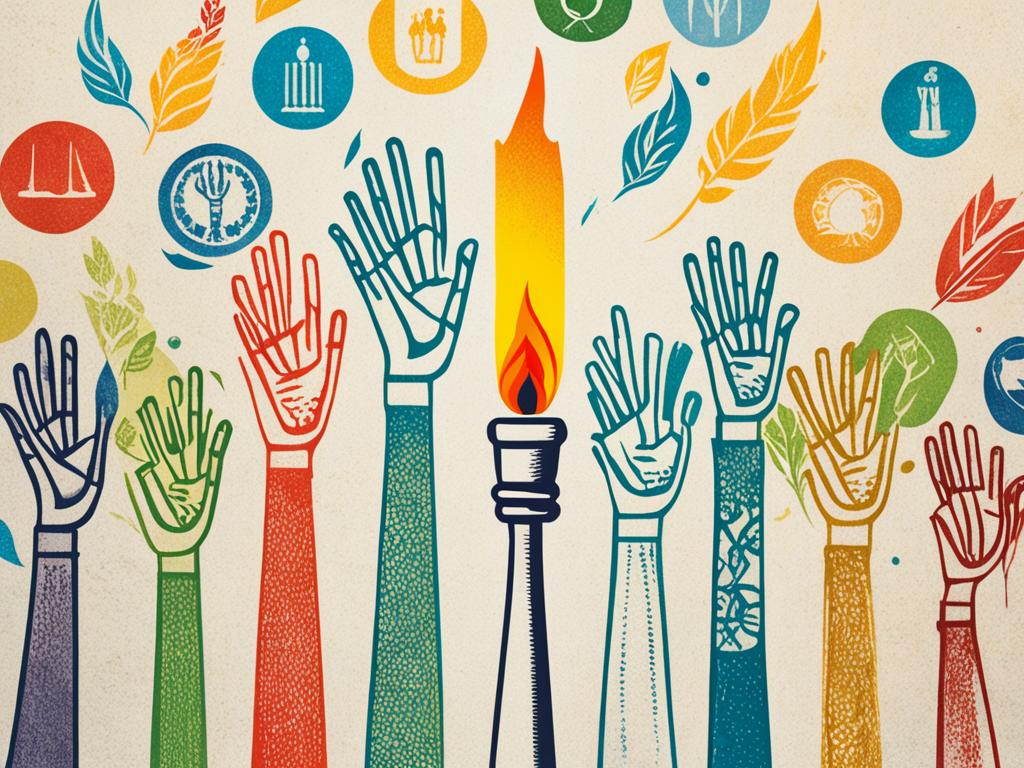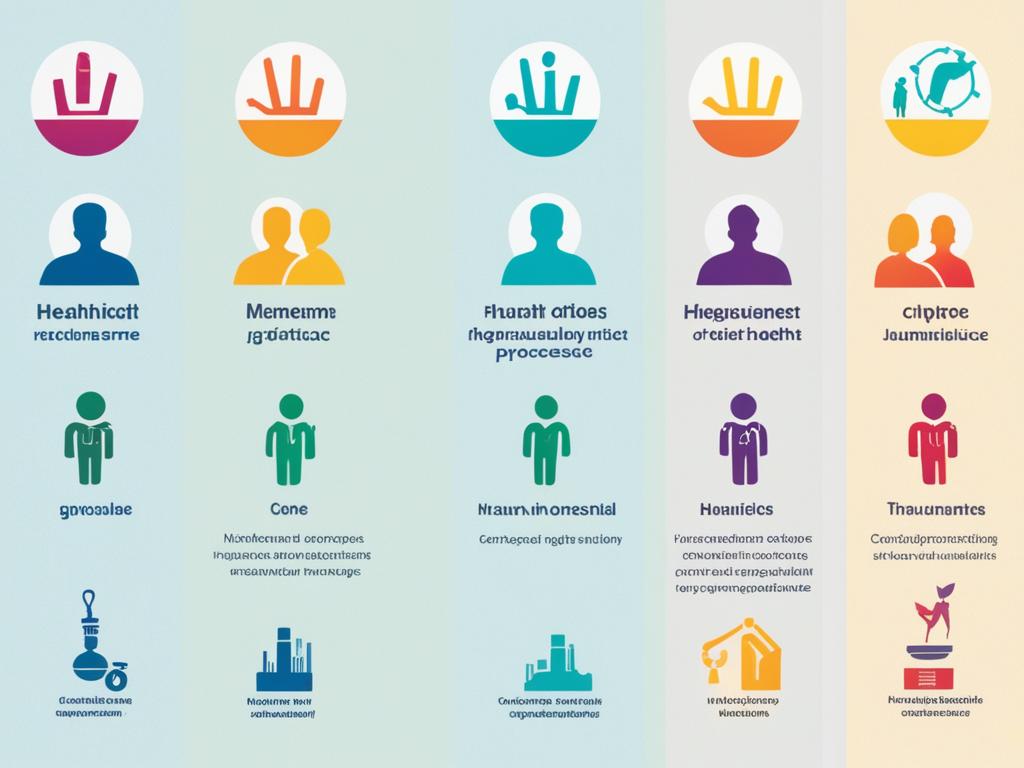
Human Rights: Definition, Characteristics, Types and Importance
Human Rights are basic freedoms and entitlements that every person has. They don’t depend on nationality, gender, race, or ethnicity. These rights are key for everyone’s dignity, equality, and well-being.
They cover many civil liberties, political rights, economic and social benefits, and cultural freedoms. These rights are the foundation of a fair and equal society.

Protecting and promoting fundamental rights is vital for social justice and equality. These rights let people express their beliefs freely, take part in politics, get to essential services, and chase their dreams without fear. Nations that respect fundamental rights show they care about democracy and humanitarian values.
This article explores what human rights are, their features, types, and examples. It highlights their crucial role in protecting dignity and building a fairer world.
Understanding Human Rights
They are the basic freedoms and entitlements everyone has, no matter their nationality, race, gender, or other differences. These rights are key for protecting human dignity and ensuring social justice. They cover a wide range of civil liberties, political rights, and economic, social, and cultural protections.
What are Human Rights?
These are the basic rights and freedoms every person has, from birth until death. They include the right to life, liberty, and security. They also protect against slavery, torture, and being arrested or detained without reason.
Fundamental Rights give people the right to a fair trial, freedom of speech, religion, and assembly. They also include the right to work and get an education.
Historical Background
The idea of fundamental rights has been around for a long time, fighting for human dignity and the rule of law. Over the years, many philosophies, declarations, and international agreements have shaped human rights. Important events include the Magna Carta in 1215, the United States Declaration of Independence in 1776, and the Universal Declaration of Human Rights in 1948.

Now, the United Nations and international law focus on promoting and protecting fundamental rights. The world has created a system of laws, treaties, and mechanisms to protect everyone’s civil, political, economic, social, and cultural rights.
Fundamental Characteristics of Human Rights
Fundamental rights have key traits that make them universal and protect everyone’s dignity. These traits help ensure equality, non-discrimination, freedom of expression, and protect minority groups and those needing humanitarian assistance.
One key feature is their universality. This means they belong to all people, without any bias, as part of being human. Fundamental rights are also inalienable. This means no one can take them away or deny them, not even governments.
Another important trait is their interdependence and indivisibility. This idea shows that all rights, like civil, political, economic, social, or cultural ones, are linked and equally vital for our dignity. If one right is broken, it can harm others, highlighting the need for a full approach to protecting the fundamental rights.

These basic principles of universality, inalienability, and interdependence are key to the fundamental rights framework. They ensure everyone, no matter their background or social status, can fully enjoy their rights and freedoms. By sticking to these principles, we aim for a fair, equal, and welcoming world where everyone’s dignity is respected and kept safe.
Classifications and Types of Human Rights
Fundamental rights are divided into different categories. Each type has its own set of protections and principles. We’ll look at the main types: civil and political rights, and economic, social, and cultural rights.
Civil and Political Rights
Civil and political rights protect our freedom and let us take part in public life. They include freedom of expression, the right to vote, and the right to a fair trial. They also cover the protection against discrimination. These rights are key for a fair society and active citizens.
Economic, Social, and Cultural Rights
Economic, Social, and Cultural Rights, social, and cultural rights make sure we live with dignity and have what we need. They cover the right to education, the right to health, and the right to a good home. They also protect minority rights. These rights help people and communities, keeping human dignity and social justice alive.
These different types of human rights are closely linked. Having one type often depends on the other. They work together to protect our civil and political rights, economic social cultural rights, freedom of expression, rule of law, and minority rights. They make sure everyone is treated fairly.

Human Rights: Upholding Human Dignity
Importance of Human Rights
Fundamental rights protect the basic dignity and value of every person. They ensure fairness and equality for everyone, no matter their race, gender, religion, or social class. This leads to a fairer and more welcoming world where everyone is respected.
They are key to helping those in need, like refugees and minorities. They also help keep the peace by stopping conflicts before they start. By valuing fundamental rights, we make the world a better place for everyone.
Fundamental Rights give power to individuals and help communities come together. They make sure everyone can live a life full of dignity, freedom, and chances to succeed. As we work towards a fairer world, we must always remember the importance of fundamental rights.
FAQ
What are human rights?
They are basic freedoms and entitlements everyone has. They don’t depend on your nationality, race, gender, religion, or other status. These rights cover many areas like civil, political, economic, social, and cultural. They are key for ensuring everyone’s dignity and equality.
What is the historical background of human rights?
The idea of human rights started in the 18th century with the Enlightenment. Ideas like natural rights and social contract theory emerged. The Universal Declaration of Human Rights in 1948 by the United Nations has greatly shaped our understanding and framework of fundamental rights.
What are the key characteristics of human rights?
Key features:
- They are universal, meaning they apply to everyone.
- They are inalienable, meaning no one can take them away.
- They are also indivisible, interdependent, and non-discriminatory.
- These principles ensure everyone’s rights are protected equally and work together to protect human dignity and freedoms.
What are the different types of human rights?
There are two main types: civil and political rights, and economic, social, and cultural rights. Civil and political rights protect freedoms like speech and religion, and ensure fair trials. Economic, social, and cultural rights cover things like education, health, and a decent living standard.
Why are human rights important?
Fundamental rights are vital for protecting human dignity and promoting social justice. They shield individuals and communities from abuse and discrimination. These rights are crucial for ensuring everyone’s basic freedoms and well-being.



Nice article, one will know their human right to avoid being intimidated.
The importance of human rights in promoting dignity, equality, and justice cannot be overstated. Thanks for highlighting this crucial aspect